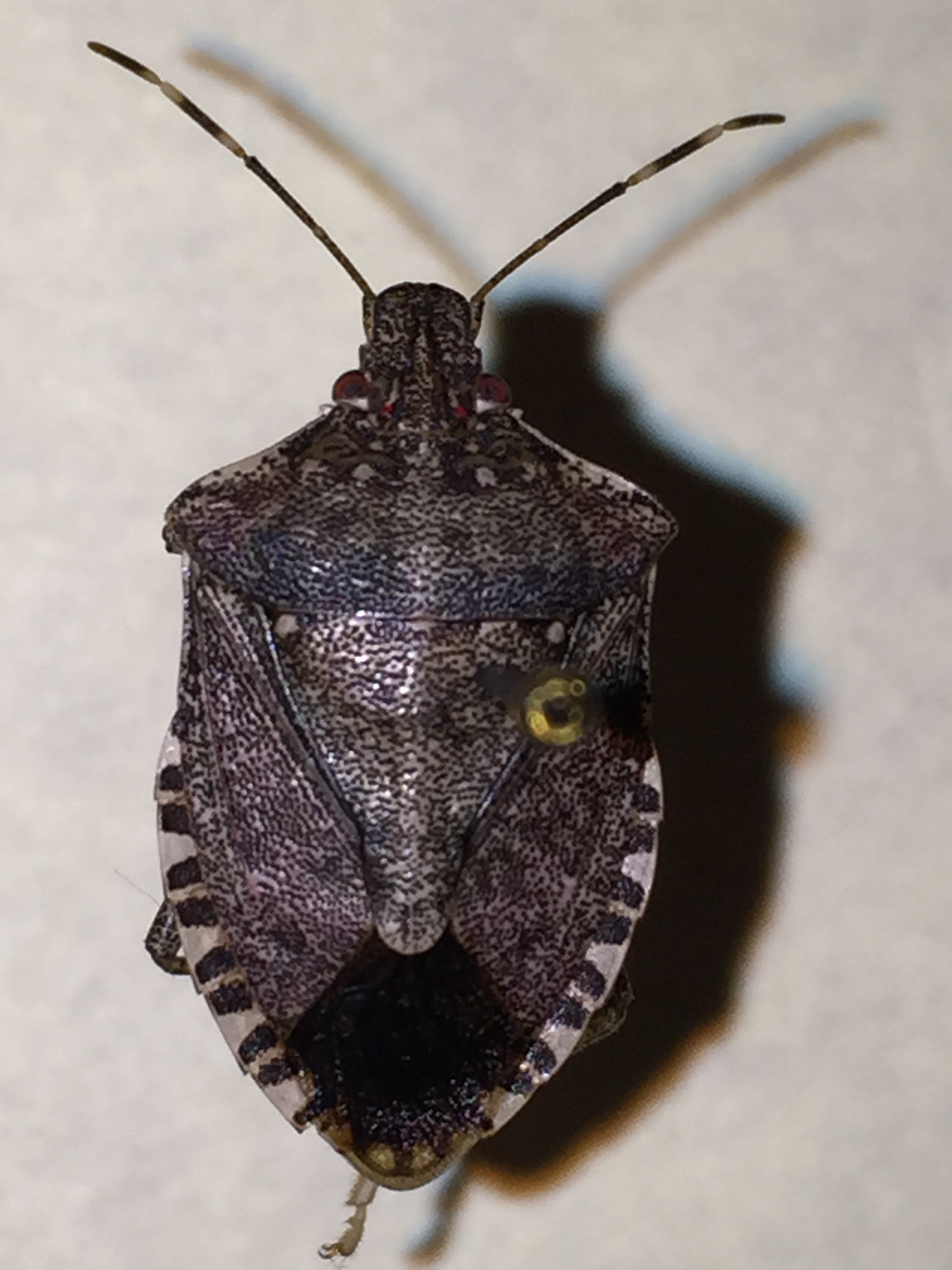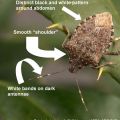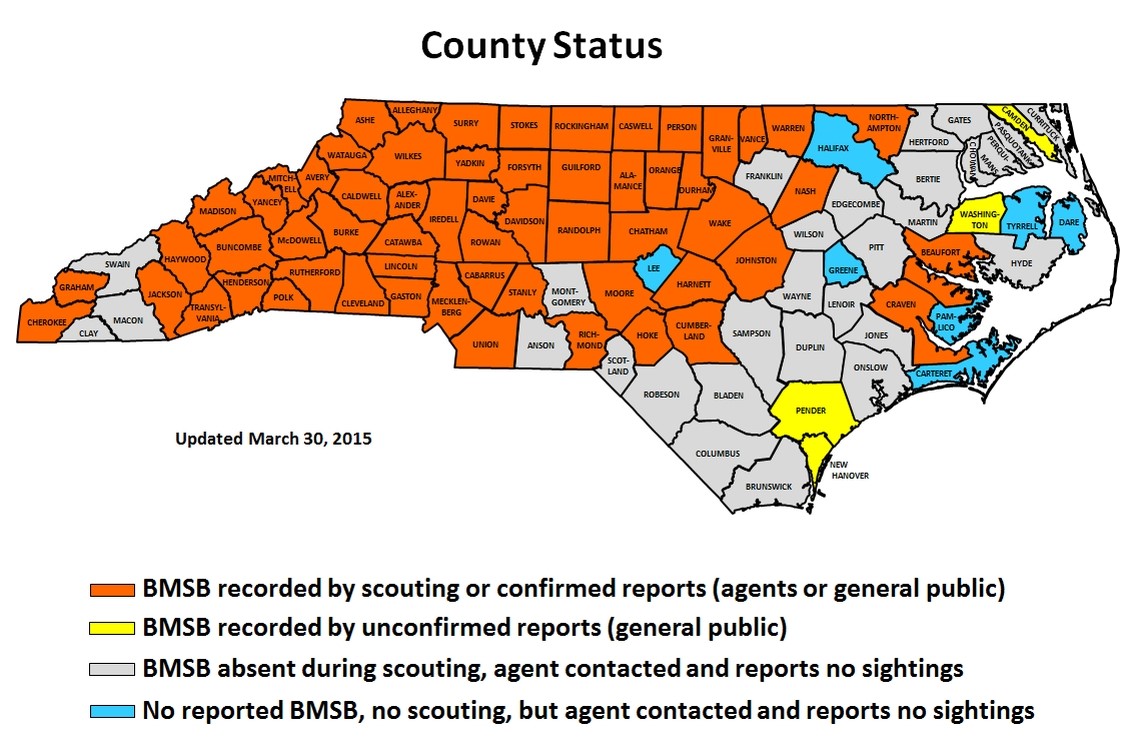
Until 1998, it was unknown in the US. That was when the first specimens were collected in Allentown, PA. Current thinking, however, is that it was accidentally introduced into that area several years earlier.
It is a native of China, Japan, Korea, and Taiwan where it is a serious agricultural pest. In the US, it has become a serious pest of fruits, vegetables, and other farm crops. In the mid-Atlantic region, crops mostly affected are apples, pears, peaches, nectarines, lima beans, snap beans, peppers, sweet corn field corn, tomatoes, and soybeans. Other crops identified as being affected include raspberries, blueberries, grapes, pecans, cucumbers, and pole beans.
Description
The Brown Marmorated Stink Bug has the normal stink bug appearance, slightly longer than ½ inch and marbled brown in color. 
Nuisance Pest
The greatest concern of most people is the movement of these bugs into buildings as they congregate on buildings in late summer and early autumn seeking a safe overwintering place. During the winter months, the bugs do not reproduce or feed to any extent. They seek out cracks under or behind baseboards, around door and window trim, around exhaust fans or and ceiling lights. They prefer high and cool locations. On warm winter days they will enter rooms and fly around the lights.
The bug is not harmful to people, pets, or structures. They don’t bite, sting, suck blood, or spread diseases affecting people. The do not eat or bore into wood.
Control
The best way to control them in your home is to exclude them. Locate openings where the bugs can get in, such as in cracks around windows and doors, loose-fitting screens, utility pipes and conduits, vents, window air conditioners, and under fascia boards. Seal these openings with a good quality silicon caulk or foam sealant. Install weather stripping around window and door frames. Adjust the sweep under exterior doors. Prevent entry into attics but putting window screening over gable vents.
If already indoors, they can be vacuumed up. Be sure to empty the bag or canister because it will begin to smell like the bugs after a while. Another effective method is to collect them in a bottle or container which contains soapy water. The bugs will drown in just a few minutes. Or you may collect them in a plastic bag, sealed it and placed in the freezer for a day or two.
Current Distribution in NC
Data courtesy of NCSU Cooperative Extension Service
Ken Ahlstrom, Ph.D., Economy Exterminators, Inc., Apex, NC 27523





